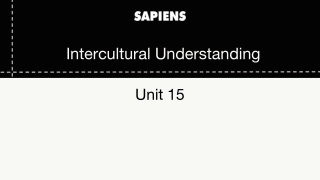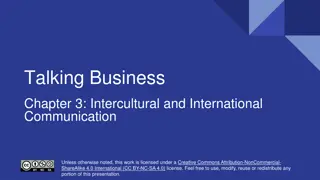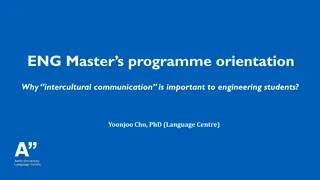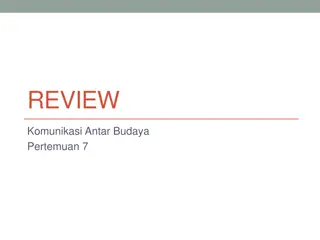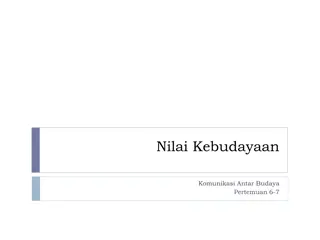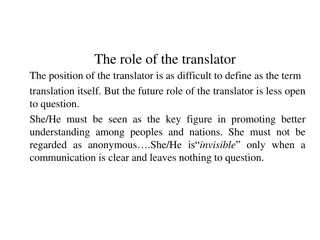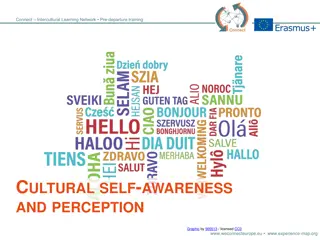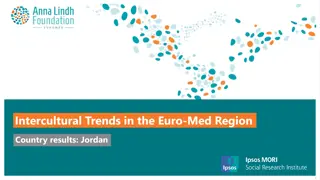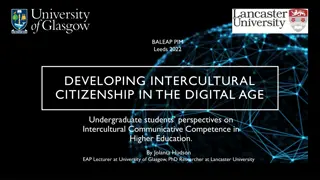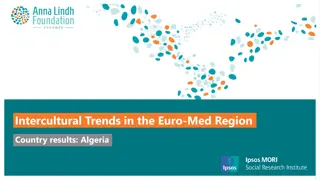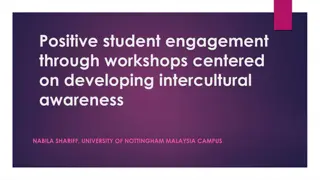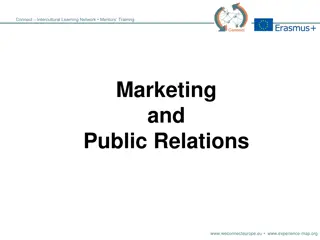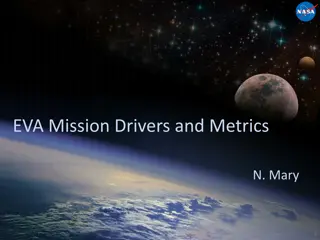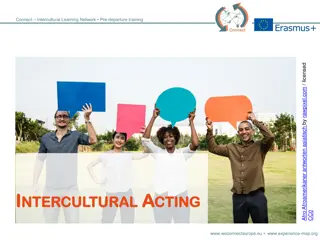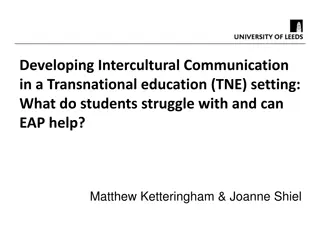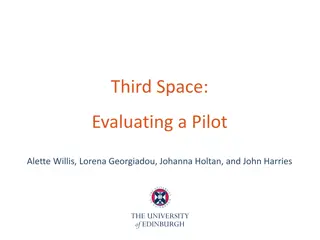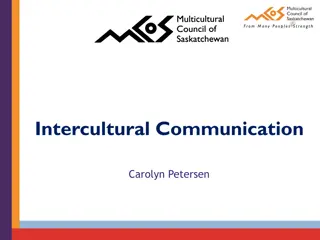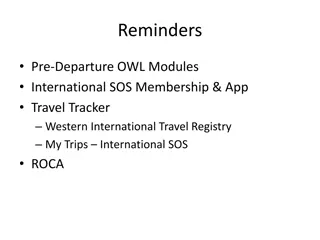Evaluating School's Mission for Intercultural Insight
Analyzing the school's mission statement in promoting intercultural understanding through strategies in the IB DP English classroom. Exploring challenges and global issues to foster international awareness and responsible citizenship.
Download Presentation

Please find below an Image/Link to download the presentation.
The content on the website is provided AS IS for your information and personal use only. It may not be sold, licensed, or shared on other websites without obtaining consent from the author.If you encounter any issues during the download, it is possible that the publisher has removed the file from their server.
You are allowed to download the files provided on this website for personal or commercial use, subject to the condition that they are used lawfully. All files are the property of their respective owners.
The content on the website is provided AS IS for your information and personal use only. It may not be sold, licensed, or shared on other websites without obtaining consent from the author.
E N D
Presentation Transcript
February 16th, 2015 At Tsukuba, Tokyo Professional competence and professional community in mathematics education Does competence belong to an individual or a community? Takuya BABA Hiroshima University
Contents 1. Mathematics teacher s professional competence 2. Mathematics education community and its competence 4. Beyond mathematics education community
1. Mathematics teachers professional competence To bridge between Pedagogy and Content is an important task in the teacher education.
PCK (Hill et al., 2008) It is not enough to have just this knowledge but it is more important to integrate and implement them into the actual lesson. The affective aspect of teacher s competence such as attitudes and willingness is not seen in this framework.
TEDS-M 2008 Framework Teacher Education and Development Study in Mathematics (TEDS-M) In this framework, what are the belief and the professional motivation?
Strengths and weaknesses of perceiving the individual professional competence [Strengths] To measure and to be aware of each described competence, To grow the weak component of competence intentionally, and To plan the pre-service education to grow each component systematically [Weaknesses] To tend to perceive it fragmentarily. In an actual lesson, it will not work individually. To be less attentive to what is not expressed. To be less attentive to long term (developmental) perspective.
Consideration of the weaknesses We perceive it as cross-section of knowledge at a certain time and not as more subtle and complicated professional- integrative knowledge embedded in the teaching practice. In order to describe this more subtle knowledge, inevitably we use more philosophical and holistic term to express the complicated whole. In this expression, being simple (e.g. listen to children s voice) and being philosophical (e.g. interactionism, social constructivism) may look quite opposite but close to each other.
Competence embedded in groups This professional knowledge has two ways: an individual teacher polishes his/her knowledge and skills through professional life the group appreciates it and support growing it Even at the vague stage of feeling, the invisible thing is formed through visible things and handed over to next group through repeated implementation of lesson and reflection over it. Especially this invisible thing will function like as air.
2. Mathematics education community and its competence
Knowledge and values held by the groups An individual teacher think based on the knowledge and values shared by the group. In Japan, through the lesson study newly recruited teachers are expected to feel and acquire these knowledge and values embedded in the daily practice. Some Japanese professional knowledge such as Kyo-zai- kenkyu and Kikan-junshi is known. Journal of Japan Society of Mathematics Education (2010) edited the anthology of shared knowledge. Sharing and verbalizing like this has strength of going beyond the context. What is important as well is the process of knowledge creation and values behind it.
Strength and limitation of verbalizing the essence (slogan) Many countries promote the education reform using the slogan child-centeredness . It has an impact on reconsidering the old knowledge. It, however, does not reach the point to form a new knowledge yet. What is easily conveyed is only conveyed and remains at very superficial level. In other words, what is important is not conveyed. Then what is the most important thing to convey? In short, it is putting the child s learning at the center of mathematics lesson. It, however, only produces the tautological effect. Again consequently, it remains very abstract and superficial.
(Example Japanese community) (Ueda, 2013) Mathematical thinking, evaluation method of higher objectives and open ended approach, textbook change, treatment of diversified mathematical thinking, have made a impact on sharing such value. Historical research can provide an important perspective to grasp values formed within mathematics education community.
Textbooks Textbook in 1973 (S48) Textbook in 1980 (S55)
Textbooks Textbook in 1985 (S60) Textbook in 2010 (H22)
Process of Curriculum Development and national assessment 6. Identification of problems 7. Revision of curriculum 1. Identification of problems 2. Curriculum development 3. Dissemination of curriculum 4.Implementation of curriculum 5. Assessing the curriculum
Present community and community beyond time and space If the knowledge as a result is simply transferred to other community, it may remain superficial. To overcome it, the community condenses the knowledge through reflection over thousands practices and contains the values and passions of many people. As time passes, the community may transform, passions and values behind the knowledge and experience are transmitted with some modification and reconstructed by the following generation of community.
Wengers Community of Practice 1) Meaning: about our (changing) ability individually and collectively - to experience our life and the world as meaningful. 2) Practice: about the shared historical and social resources, frameworks, and perspectives that can sustain mutual engagement. 3) Community: about the social configurations in which enterprises are defined as worth pursuing and our participation is recognizable as competence. 4) Identity: about how learning changes who we are and creates personal histories of becoming in the context of our communities. Learning as belonging Learning by doing Learning as becoming Learning as experience
Important points to consider Invisibility: Not all aspects can be seen and some critical aspects cannot be easily measured. Collectivity: Not only individuals but also group have a competence. The latter enables individuals to think more deeply/ shallowly and appreciates/ depreciates their efforts. Formativeness: The group forms knowledge (competence). This should be interpreted as a process not as a product. Through this process, the group attach a lot meaning and values into the knowledge and values, and they can be shared among the members. Historicity: This and formativeness may complement each other. The formation process is long and
Fixation and attention-calling functions of describing the competence Describing the professional competence such as SEARS-MT will provide the direction and goal beyond the diversity of this area s common characteristics. It can provide many reference points and make objective clear in each country. On the other hand, the above discussion pose the problem how to make it possible to discuss the invisible professional competence by the community in a long run. Shiono Naomichi in 1930s called the newly-revised syllabus pomace . He rather values its discussion process. Hopefully, describing the professional competence can be interpreted as continuous process of externalization and self- referential over shared knowledge.
Reference Baba, T. eds. 2006. International Comparative Studies on Influence of Teachers Views about Education on Mathematics Lesson at Primary Schools, 2004-2006 Scientific Research Fund International Research (b) (2) Final Report, May 2006. Baba,T., Nakai.K. 2011. Teachers Institution and Participation in a Lesson Study Project in Zambia: Implication and Possibilities Africa-Asia University Dialogue for Educational Development Report of the International Experience Sharing Seminar(2) -Actual Status and Issues of Teacher Professional Development, CICE, Hiroshima University, pp.85-102. Inprasitha,M. 2013. Open Approach: Japanese Mathematics Education from Value Perspective through Thailand Experience . Annual Conference of Japan Academic Society of Mathematics Education. Hiroshima University. Journal of Japan Society of Mathematics Education. 2010. Special Issues EARCOME 5 Mathematics Education Theories for Lesson Studies: Problem Solving Approach and the Curriculum through Extension and Integration, Japan Society of Mathematical Education, 2010. Shimizu, et al. 2007. Japanese Lesson Study in Mathematics, Its Impact, Diversity and Potential for Educational Improvement, World Scientific Pub. Ueda, A. (2013) Values in Mathematics Education in Japan from the Perspective of Open Ended Approach . Annual Conference of Japan Academic Society of Mathematics Education. Hiroshima University. Wenger 2002 Community of Practice. Harvard Business School Press.


